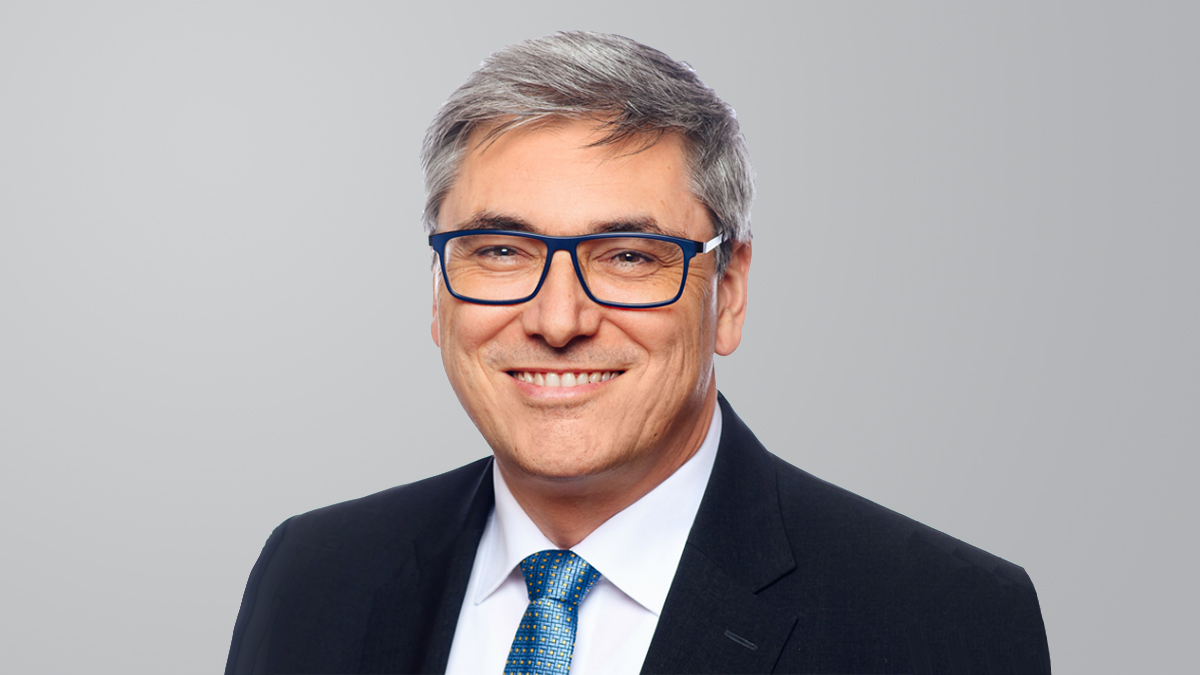Reinsurers on target to deliver mid-teens capital return: Gallagher Re's Kerton
‘If the wind doesn’t blow then 17 points is a reasonable number to expect,' Ian Kerton says
Reinsurers’ focus is now on achieving rates that at least match inflation on a risk-adjusted basis, broker's UK chief executive Ian Kerton says
A 17-point return on capital is a “reasonable” expectation for reinsurers if the current hurricane season turns out to be “benign”, according to Gallagher Re’s UK chief executive, Ian Kerton.
In an interview with Insurance Day during the annual meeting of reinsurers in Monte Carlo, Kerton said that figure was unlikely to be sustainable, however, over the long term.
For the second consecutive year, reinsurers’ underlying return on equity (RoE) was well above the cost of capital, coming in at 13.4% at the half-year 2023 stage after an elongated period of sub-par returns, according to Gallagher Re’s analysis. This is a material improvement on the 10.2% achieved at half-year 2022, driven by improved underwriting margins and higher running investment income.
For the first six months of 2023, the reported RoE came in even more strongly at 19.3%.
“Reinsurers’ half-year results indicate they’re on track to achieve a 17- or 18-point return on capital by the end of the year. If the wind doesn’t blow then that’s a reasonable number to expect, based on our analysis,” Kerton said.
“But the return on capital is calculated over 12 months and the first half of this year was relatively benign for reinsurers from a natural catastrophe perspective, so it’s a question now of what happens in the second half with hurricane season.”
Reinsurers came to the meeting in Monte Carlo last year with a clear message that rates needed to increase, terms and conditions needed to be tightened and attachment points pushed up.
Kerton said: “From an event perspective, they wanted to move away from providing aggregate-type covers and P&L protections to providing more capital-oriented solutions. They wanted to make sure they could deliver a return that would at least meet their cost of capital and they were very disciplined about that come the January 1 renewal.”
At this year’s meeting, as renewal discussions got under way, the emphasis was on achieving rates that at least match inflation on a risk-adjusted basis. Mid-way through hurricane season it is too early to tell whether reinsurers will achieve that goal, Kerton said.
“What is clear, though, is reinsurers are on target to have a very good year and probably to deliver a return on capital in the mid-teens, which will be the first time they’ve done that for some time.”
“What we need to get away from, as an industry, is resolving issues by excluding because what we end up with is more protection gap. What we need to do is provide a policy that is appropriate and reflects the benefit of this sector, which is to do an enormous amount of social good”
Ian Kerton
Gallagher Re
It is also becoming clear reinsurers are looking to do more, write more and deploy more capacity.
“Before we came to this conference, we sat down with eight of the leading reinsurers and almost without fail they said they were looking to grow. There’s some concern in terms of US casualty but, aside from that, whether it’s specialty lines of business or property, growth was the clear message – provided they get the right returns.”
Insurer demand to buy more may also match reinsurer desire to sell more. “There’s a feeling that, last year, insurers bought reinsurance to a budget that didn’t cover all the inflationary risk that’s contained in their portfolios; that they didn’t buy as much catastrophe aggregate limit as they were expected to. This year, we may well see them buying more, providing the economics work for them,” Kerton said.
“Insurers have also made changes to their portfolios and as brokers we’ll be looking to represent those changes in a positive manner. We’ve been proactive, working with our clients to help them differentiate their portfolios, to put them in the best possible position with reinsurers. With a lot of reinsurers seeking to write more business, it will be interesting to see how the pricing dynamics play out, come January 1.”
Orderly renewal
The main catchphrase during this Monte Carlo Rendez-Vous, in terms of expectations for the run-up to January 1, is it will be an “orderly renewal”, Kerton said.
The crux will be reaching agreement with cedants not only on pricing, but also on event definition and, in certain classes, exclusionary language to ensure back-to-back cover.
“During the soft market, reinsurers felt some of the terms and conditions on slips had broadened too far. For property catastrophe, that meant looking at some of the hours clauses,” Kerton said.
“Reinsurers pushed hard to restrict the definitions of an event, realigning cover with where it was a few years ago. From a client perspective, some of those changes came in quite late and they didn’t have a chance to fully consider and respond to them. Now they have, so I think we’ll see some push for change on that.”
In certain areas there has been a “disconnect” between insurers and reinsurers with some bifurcation in market conditions.
For example, Kerton said, political violence and terror event definitions by time and distance remain a focus for insurers and reinsurers alike, as is cyber war exclusionary language, which may be more restrictive on reinsurance treaties than in insurance policies.
Given the increasing frequency of catastrophe losses from perils for which there are few or no models – in particular, severe convective storms and wildfires – reinsurers are finding it difficult to price the so-called secondary perils. Ignoring the problem is not an answer, Kerton stressed.
“What we need to get away from, as an industry, is resolving issues by excluding because what we end up with is more protection gap. What we need to do is provide a policy that is appropriate and reflects the benefit of this sector, which is to do an enormous amount of social good,” he said.
“To be fair to reinsurers, though, most of them don’t think in terms of removing cover but, over the past 12 months, they have instead moved attachment points so their exposure to certain events is less.”
In terms of the social good the sector can do, it is hoped Morocco and its vulnerable population so devastatingly hit by September 8’s earthquake will soon be one beneficiary. In 2020, Gallagher Re was appointed by Morocco’s solidarity fund against catastrophic events, the FSEC, to develop and place a scheme for uninsured properties and their owners and tenants. The result was a parametric solution to cover the probability of a pre-defined event happening, with an agreed payout.
Kerton said: “The parametric solution of this scheme means there is no need for an assessment of the losses from the recent earthquake in Morocco. All being well, there will be money going quickly to the Moroccan government.”
Growth message
Gallagher’s main takeaway from its meetings in Monte Carlo has been reinsurers are looking to grow their business and do more with insurer clients.
“With the possible exception of US casualty, which reinsurers are bit more cautious around because of what they’ve seen in terms of loss frequency and severity, their clear message to us has been they are open for business, they’re very much risk-on rather than risk-off.”
One message the broker does not agree with is this is a true hard market.
“It remains difficult to find capacity in retro, although there are signs that is changing, but what we have is not a hard market as much as a more disciplined one,” Kerton said.
“Traditionally, hard markets are where you can’t get the cover, irrespective of the price you pay. What we’ve found this year is there is ample capacity out there in almost all lines, it’s just a matter of what reinsurers are seeking to charge for that capacity and, for the first time in a long time, they have held firm. They have been disciplined and nobody has broken ranks.”
That discipline is a recognition of the challenging global economic environment, which has taken reinsurers far from the cheap capital-low interest rate world seen in the previous 15 years.
“The question now is, how much is the right kind of return?”



